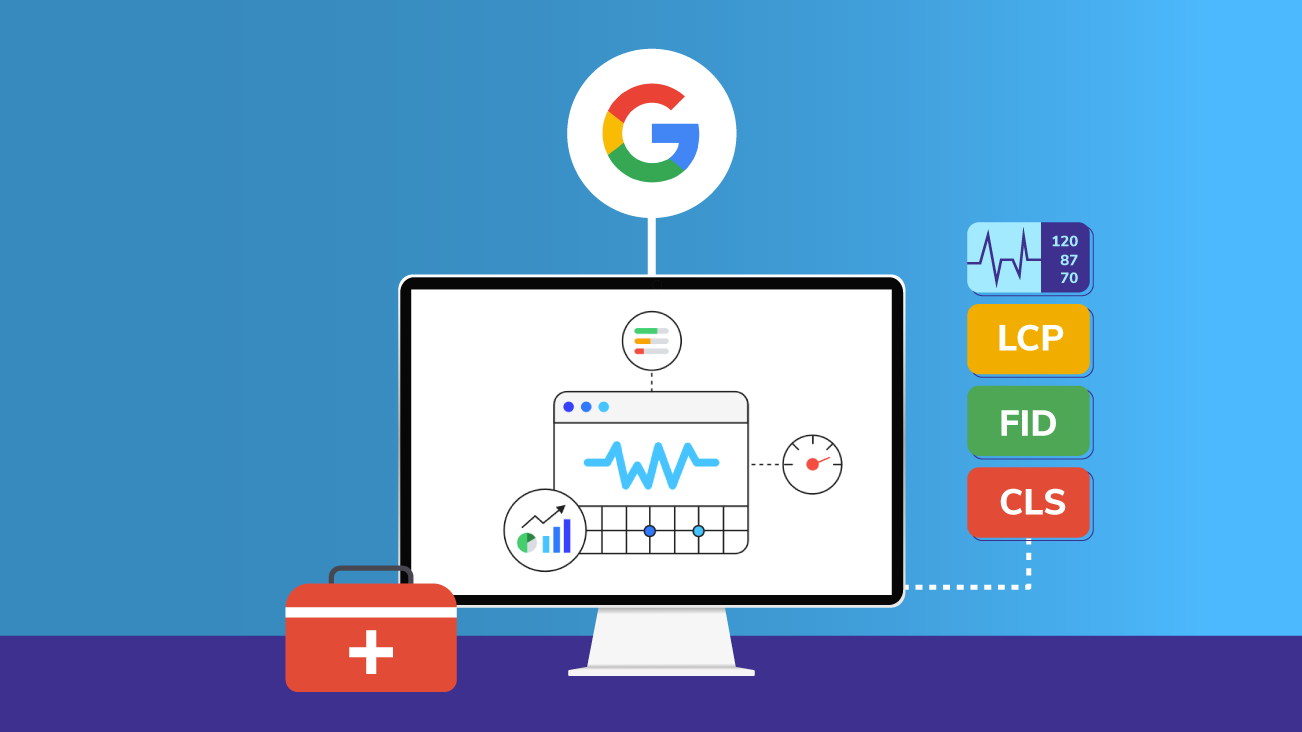Core Web Vitals are a set of metrics introduced by Google to measure and assess the user experience (UX) of a website, specifically focusing on three key areas: loading performance, interactivity, and visual stability. These metrics help webmasters, developers, and site owners optimize their sites for better user experience and SEO (Search Engine Optimization). They are part of Google’s broader initiative to enhance user satisfaction and are integral to ranking signals for search results.

The 3 Core Web Vitals Metrics:
- Largest Contentful Paint (LCP) – Loading Performance
- Measures the time it takes for the largest visible content element (e.g., image, video, or block of text) to appear on the screen after the page starts loading.
- Ideal LCP: 2.5 seconds or less.
- Why it matters: A slow LCP can make a page feel unresponsive, which negatively impacts the user experience, leading to higher bounce rates and frustration.
- First Input Delay (FID) – Interactivity
- Measures the time from when a user first interacts with a page (e.g., clicks a link, taps a button) to the time the browser is able to respond to that interaction.
- Ideal FID: 100 milliseconds or less.
- Why it matters: Long delays in responsiveness can create frustration, especially on mobile devices, as users expect immediate feedback when interacting with a site.
- Cumulative Layout Shift (CLS) – Visual Stability
- Measures the amount of unexpected layout shifts (elements moving around on the page) during the page’s loading process.
- Ideal CLS: 0.1 or less.
- Why it matters: Unexpected layout shifts (such as buttons moving when a page is still loading) can cause user frustration, leading to accidental clicks or difficulty navigating the page.
Why Core Web Vitals Matter:
- User Experience: At the heart of Core Web Vitals is the goal of improving the overall experience of web visitors. A fast, interactive, and stable site creates a positive user experience, encouraging visitors to stay longer and engage more.
- SEO Ranking: Since Google’s Page Experience update in 2021, Core Web Vitals have become an important ranking factor for SEO. Websites that provide a better user experience are more likely to rank higher in search engine results pages (SERPs).
- Conversion Rates: Websites that perform well in Core Web Vitals are more likely to see improved conversion rates, as users are more likely to complete desired actions (e.g., form submissions, purchases) when the site is fast and responsive.
- Mobile Optimization: Given the increasing use of mobile devices to browse the web, Core Web Vitals are particularly important for mobile optimization. Mobile users are especially sensitive to slow loading times, interactivity issues, and layout shifts.
How to Improve Core Web Vitals:
- Optimize Images and Videos: Compress large images and videos to reduce load time. Using modern formats like WebP can also improve performance.
- Improve Server Response Times: Reduce server-side delays by using faster hosting, caching, and content delivery networks (CDNs).
- Minimize JavaScript Execution: Optimize and defer non-critical JavaScript so that the browser can respond more quickly to user interactions.
- Use Font Optimization: Make sure fonts load efficiently to prevent visual instability.
- Reduce Layout Shifts: Avoid elements that move around unexpectedly, especially ads, images, or dynamic content that loads lat